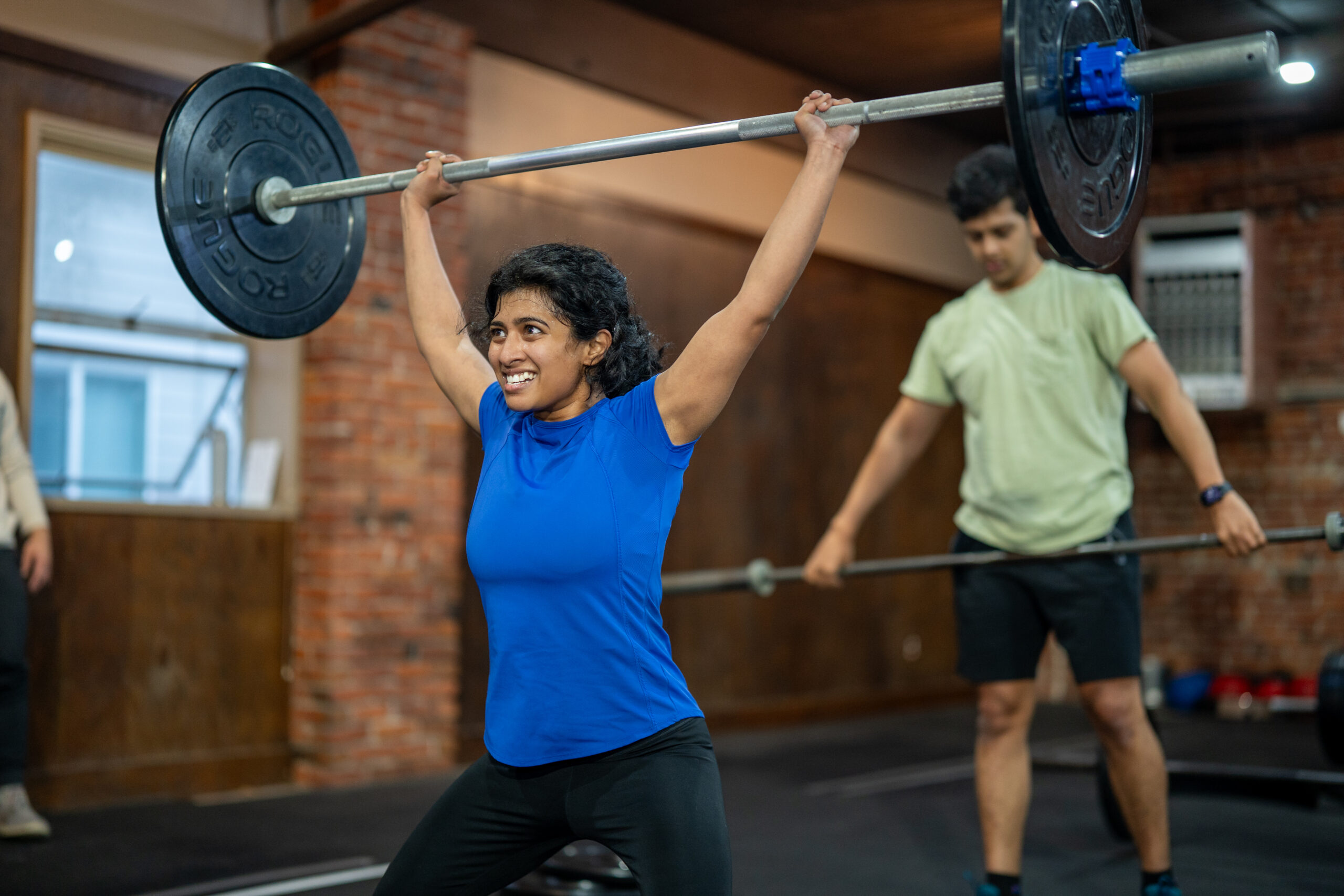About the Author: Dan Hollingsworth is a board-certified specialist in orthopedic physical therapy and a certified athletic trainer. After serving 10 years as a physical therapist in the U.S. Navy, he now lives in Poulsbo, Wash., with his wife Amy and two daughters. They own and operate Kitsap CrossFit. Dan currently works part-time as an acute-care physical therapist and is a member of the CrossFit HQ Level 1 Certification Staff.
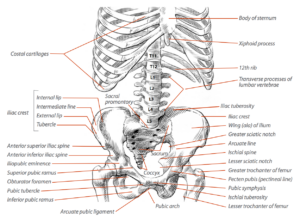
An easy case can be made for the hip being the most important anatomic region in all athletic endeavors. Before this argument can be made, we must have a clear picture of the anatomic structure and biomechanics of this complex region.
A basic understanding of human biomechanics will be helpful in fully comprehending this article.
Skeletal Anatomy
The true hip joint, otherwise known as the coxofemoral joint, is the articulation between the femur (the long bone of the thigh) and the pelvis. Specifically, these two structures form a union between the head of the femur and the acetabulum of the pelvis, creating a true ball-and-socket joint. The primary skeletal role of the coxofemoral joint is to support the weight of the head, arms and trunk. Dynamically, the hip complex is the power-generation and transfer station that initiates and directs nearly all complex human movements.

The femur is the longest bone in the human skeleton. Distally, the femur articulates with the tibia to form the knee complex. The femoral neck projects off the proximal shaft of the femur and angulates approximately 55 degrees toward the pelvis. In women this angle is a little greater to accommodate the greater width of the female pelvis. The femoral neck tends to be the weakest link in the femur and is particularly susceptible to injury. New athletes who complain of hip pain, especially with high-impact activities, should be evaluated to rule out a possible stress fracture. The head of the femur is attached to the proximal femoral neck and forms the point of interaction between the femur and pelvis. The femoral head is circular in shape and covered in smooth articular cartilage.
The pelvis is the transition area between the spine and the lower extremities. The pelvis comprises three bones: the ilium, the ischium and the pubis. The pelvic ring is completed by the distal end of the spinal column, the sacrum. Interaction between the head of the femur and pelvis occurs at the cup-like structure known as the acetabulum. All three bones of the pelvis contribute to the structure of the acetabulum. Interestingly, it is only the upper portion of the acetabulum that is lined with smooth articular cartilage. This is due to the weight-bearing pattern of the joint.
The hip joint is supported by a thick and strong capsule of ligaments. This dense capsule is a major contributor to the stability of the hip joint. The capsule extends well beyond the head of the femur and actually encapsulates the femoral neck. Several areas of thickening within the capsule add greater strength to areas that are exposed to significant stress during weight-bearing activities, with the thickest area being the anterosuperior portion. The acetabular labrum is a wedge-shaped ring of cartilage that further adds to the stability of the hip joint. The labrum encircles the entire acetabulum and not only increases the depth of the acetabulum but also provides a physical barrier that improves stability much the same was as a wheel chock prevents a car from rolling downhill.
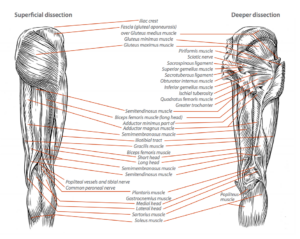
Hip-Joint Kinematics
In order to have a discussion of joint motion, it is critical to have a frame of reference. In most discussions of hip-joint motion, including this one, the primary frame of reference is that of the femur moving on the pelvis at the acetabulum. During weight-bearing activities, however, the femur remains in a relatively fixed position and it is the pelvis that moves on the head of the femur. For purposes of this discussion, the moving segment will be the femur, unless otherwise stated.
The coxofemoral joint is an incredibly stable joint when compared to other ball-and-socket joints, such as the shoulder. This stability comes at the cost of mobility, however. The hip joint enjoys significantly less freedom of motion than the shoulder does. While this may seem like a limitation of the joint, it is in actuality what allows the joint to be as strong and powerful as it is. Can you imagine how challenging landing a 1-rep-max snatch would be if you were in constant fear that you might dislocate your hip?
The primary actions at the hip joint are flexion, extension, abduction, adduction, internal rotation and external rotation. The point of this article is not memorization of somewhat debatable statistical averages for range of motion, but rather the development of a rudimentary understanding of hip-joint motion and an ability to recognize deviations from the norm.
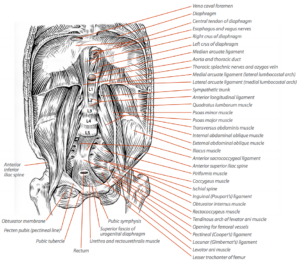
Due to the number of two-joint muscles that cross the coxofemoral joint, the range of motion available is highly dependent upon the position of the joints immediately proximal and distal to the hip. Hamstring tension limits the hip joint to approximately 90 degrees of flexion when the knee is fully extended. Flexion of the knee joint releases tension in the hamstrings, therefore allowing for hip flexion of approximately 120-135 degrees.
Conversely, when the knee is flexed, hip extension is limited by tension in the rectus femoris muscle of the quadriceps group on the anterior thigh. The normal range for hip extension is 10-30 degrees. Abduction and adduction move the leg away from and toward the midline of the body, respectively, and the hip enjoys approximately 30-50 degrees of abduction and 10-30 degrees of adduction. Internal and external rotation of the hip is typically measured with the hip and knee flexed to 90 degrees.
In this position, external rotation occurs when the foot is brought up toward the midline of the body, causing the femur to roll outward. Internal rotation occurs when the foot is pushed away from the midline, causing the femur to roll inward. Due to the orientation and tautness of the hip-joint capsule, internal rotation is typically limited to 30-45 degrees, whereas external rotation reaches 45-60 degrees.
When the frame of reference is shifted to the pelvis moving on the femur, as occurs during weight-bearing activities, several additional planes of motion must be considered. Anterior and posterior pelvic tilt refer to movement of the pelvis in the sagittal plane. Anterior tilt of the pelvis produces flexion of the hip joint and can be visualized as increasing the arch (lordosis) in the lower back (lumbar spine). Posterior tilt produces extension of the hip and can be visualized as flattening of the normal lumbar lordosis.
Quite often, new athletes will need to be taught anterior and posterior pelvic tilt before they are able to understand cues regarding maintaining a “neutral” spine position during complex movements such as the squat or deadlift. Lateral pelvic tilt occurs when one hip joint acts as a pivot point while the opposite side is raised or lowered within the frontal plane. During single-leg-stance activities, such as pistol squats or during the stance phase of running, significant lateral pelvic tilt is an indicator of lateral hip weakness. Finally, no discussion of hip-joint kinematics is complete without addressing the issue of lumbo-pelvic rhythm.
This phenomenon describes the coordinated movement between the hip joint, sacrum and lumbar spine. This allows for a greater range of motion to be accomplished than can occur through the movement of one joint in isolation. A prime example of lumbo-pelvic rhythm occurs when one tries to touch his or her toes while seated with the knees extended. Through isolated flexion of the hip, one can achieve only 90 degrees, which is insufficient for touching the toes. Continuing to bend forward and touch the toes requires additional flexion through the lumbar spine. Athletes who have significantly limited flexibility will obviously require a greater degree of coordinated movement through these segments in order to reach the end ranges of motion.
Muscles of the Hip
As is true with the musculature of any joint, the muscles that direct motion at the hip often have multiple lines of action. In the interest of keeping this discussion simple, we will discuss the primary actions of each muscle group. The reader should note, however that hip-joint position will greatly influence a muscle’s action and in some cases can completely reverse a muscle’s function.
Hip Flexion
The primary muscles producing flexion of the coxofemoral joint are the iliopsoas, rectus femoris, sartorius and the tensor fascia lata (TFL). The iliopsoas is recognized as the prime hip flexor and is actually composed of two separate muscles: the iliacus, which originates on the ilium of the pelvis, and the psoas major, which originates on the lower levels of the lumbar spine. These two muscles converge into the common tendon of the iliopsoas, which inserts onto the proximal end of the femur.
The iliopsoas is a powerful flexor of the hip. While its power potential is not as great as that of the hip extensors, sedentary or poorly developed individuals may actually develop hip-flexor-dominant movement patterns. This can lead to a host of issues that include, knee, hip and lower-back pain.
The rectus femoris is the only 2-joint muscle of the quadriceps muscle group. This muscle crosses both the hip and knee joints, thereby influencing the motion of each. As mentioned previously, because the rectus femoris is a two-joint muscle, the position of one joint will influence this muscle’s force-production potential at the other joint. The rectus femoris’ contribution to hip flexion is greatest when the knee is maintained in slight flexion.
Tightness in the hip-flexor muscle group can lead to multiple movement faults. Many individuals who appear to have limited hamstring flexibility may actually be limited due to poor hip-flexor flexibility. Shortened or tight hip flexors will cause anterior tilt of the pelvis. Tilting the pelvis forward will place the hamstrings in a lengthened state.
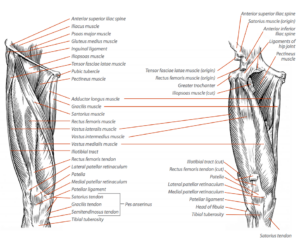
When further lengthening of the hamstrings is required, it will appear to be limited due to the pre-loaded state of the muscle group.
The hip extensors may also be inhibited by the anterior tilt of the pelvis. The powerful gluteus maximus of the hip-extensor group loses force-production potential when the hip is flexed. Anterior tilt of the pelvis places the hip into flexion, thereby blunting the potential of the glutes. To demonstrate this, stand tall and squeeze your glutes together very tightly. While maintaining this squeeze, bend forward at the hips. Notice how it is nearly impossible to maintain that strong contraction of the glutes? Tightness of the hip flexors will limit hip extension and could be the reason you are plateauing on your deadlift.
Hip Extension
Speaking of hip extension, the extensor group is one of the most under-utilized muscle groups in modern civilization.
The gluteus maximus and the hamstring muscle group are the primary extensors of the hip joint. These two are responsible for the violent opening of the hip joint that is required in nearly every explosive movement performed in athletics and conditioning. As was demonstrated earlier, the gluteus maximus is most active when the hip is in a neutral or maximally opened position. Flexion of the hips inhibits the gluteus maximus, and at a position of 35 degrees of hip flexion the hamstrings become the primary hip extensors. The gluteus maximus also plays a role in lateral (external) rotation of the femur; therefore, weakness in the gluteus maximus may contribute to the knees rolling in at the bottom of the squat.
Like the rectus femoris, the three muscles comprising the hamstrings are two-joint muscles. The muscles of the hamstrings originate on the ischial tuberosities (the “sit bones”) and extend past the knee, inserting on both the medial and lateral sides of the tibia. The hamstring muscle group aids the gluteus maximus in hip extension and also flexes the knee. Slight flexion of the knee increases the force potential of the hamstring muscle group due to the improved length-tension relationship.
Hip Abduction
The prime movers for hip abduction are the gluteus medius and gluteus minimus. Some fibers of the gluteus maximus will assist this motion under significant resistance. In a closed-chain scenario, such as a squat, the muscles of hip abduction are responsible for preventing the knees from collapsing in and violating the “knees in line with toes” principle. Weakness in the gluteus medius and gluteus minimus have been implicated as a primary cause of chronic knee pain. In this squat example, it is easy to see why that is the case, as weakness will allow a significant shear force to occur at the knee during dynamic movements.
Another important function of the hip abductors is stabilization of the pelvis in the open kinetic chain. During single-limb-stance activities (walking, running, pistol squats), these muscles keep the pelvis level. Weakness in the hip abductors will cause the hip opposite the stance leg to dip downward. This instability of the hip/pelvis can lead to a host of issues including knee, hip and lower-back pain.
Hip Adduction
Interestingly, while there are five muscles that are capable of producing a hip-adduction force, the contribution of hip adduction to hip-joint function is not yet clear. It has been theorized that the adductors of the hip do not have a primary mobility role but are more or less reflexive during gait. There actually appears to be a good body of evidence that indicates the hip adductors as having a role in hip internal rotation. This movement of the hip does not have a prime mover.
Hip External Rotation
Lying deep to the gluteus maximus, six muscles produce external rotation of the hip: the obturator internis and externus, the gemellus superior and inferior, the quadratus femoris, and the piriformis muscles. Due to its relative size and proximity to the sciatic nerve, the piriformis muscle often receives the most attention in this group of muscles.
The sciatic nerve is the largest and longest nerve in the human body, and its fibers supply the skin of nearly the entire lower extremity and the muscles of the posterior thigh and those of the leg and foot. This nerve passes directly inferior to the piriformis muscle, and therefore tightness or spasm in this muscle can cause compression of the nerve, resulting in pain radiating from the buttocks and down the lower extremity. In a small percentage of humans, the sciatic nerve will actually pierce through the piriformis instead of passing inferior to it.
While tightness in the piriformis can lead to the dreaded and often over-diagnosed piriformis syndrome (a.k.a., sciatica), tightness in any of the hip external rotators can significantly limit athletic performance and function. Limitations in squat depth, knees buckling in during the landing position of Olympic lifts, inability to bounce out of the hole on deep squats and a host of other issues can all be linked to weakness and/or tightness in the hip external-rotation muscle group.
Summary
The athletic hip is clearly a complex interaction of many skeletal and muscular structures that are vital to nearly any and all athletic activities. The purpose of this article is to provide a basic understanding of the structure and function of this powerful region of the body. Armed with this knowledge, we should be able to better understand how to fully engage the hip and begin to look for inefficiencies that may be limiting optimal hip function and performance.
Reference link:


